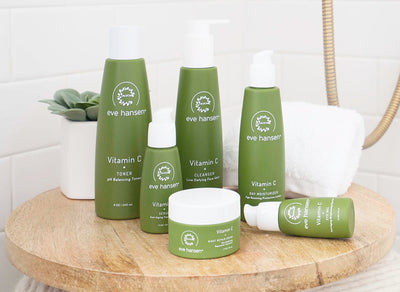
Much like the “chewing gum takes 7 years to digest” myths we believed in our childhood, myths about skin care practices also exist and can lead to extreme confusion and the development of bad routine habits. Nowadays, skin care advice is everywhere and not all of it is good or completely accurate and often times, following this advice can have disastrous effects on one’s complexion. In this week’s blog post, we will be busting the top 7 biggest ‘old wives’ tales’ in skin care.
Myth #1: Oil is bad for oily skin
When it comes to facial oils, it’s easy for our friends with oily skin to assume it’s better that they stay away. Because oily skin + oil = oiler skin, right? Nope! Contrary to common belief, using the right oils on oily skin can actually help regulate oil production! Could the cure to oil be, oil? For oily skin, non-comedogenic oils (oils that won’t clog your pores) such as argan, rosehip and sweet almond, regulate oil by hydrating the skin and delivering deep nourishment. Did you know that over-drying naturally oily skin can actually worsen problems? When oily skin loses moisture, it works to overproduce natural oils (sebum) in order to compensate. To combat this, oily skin types can greatly benefit from moisturizing with a quality, balancing oil.
Our favorite oil blend for oily skin? Blue tansy!
Myth #2: You don’t need sunscreen on cloudy days
Though easy to believe in, putting this myth into practice can have potentially dangerous consequences for one’s skin health. The thought of not needing SPF when skies are grey is preposterous and simply not true! Cloud barriers only diffuse a minute amount of sunlight, and therefore, your skin still absorbs the same amount of UV rays as it does when the sun is shining! Any time spent outside without sun protection leads to skin damage and exacerbates the visible signs of aging.
SPF should be the last step in a skin care routine, before applying makeup. Whether it’s sunny or cloudy or you’re indoors or outdoors, wear at least SPF 30 EVERY.SINGLE.DAY. and reapply every 3-4 hours.
Myth #3 Skin Care is only for your face
Although the skin on your face is what first meets the eye, the skin on the rest of your body could also benefit from some TLC. And while it is easy to get caught up in our 10-step skin care routines, pay special attention to the areas that we tend to ignore - hands, feet, lips, elbows, knees – as these areas are likely to suffer from dryness and cracking if not properly taken care of.

Myth #4 There’s no such thing as too much exfoliation
There’s no doubt that exfoliation is necessary and beneficial for clear, smooth-looking skin, but there IS such a thing as too much exfoliation. Exfoliating does help slough away dead skin cells but it’s easy to irritate skin if you over-do it. Some skin types can handle daily exfoliation while others can only handle once a week. Listen to your skin and observe the way it reacts to determine how often you should exfoliate!
Myth #5 Skin care is merely outward
Healthy, glowing skin extends far beyond our cleansers and serums. In other words, ‘you are what you eat’ proves to be true when talking about the correlation between our diets and complexions. Limiting our sugar & dairy intake and increasing the presence of antioxidants in our diets will produce visible effects from the inside out!
Myth #6 Sleeping with your makeup is acceptable
We get it. After a long, stressful day, making the trip to the bathroom to wipe off a full face of makeup can be a grueling task. But dealing with the consequences of snoozing with your foundation on is even more exhausting. Leaving on your makeup, mixed with the dirt and oils your skin accumulates throughout the day can clog pores and flare breakouts! Trust us. Even if it takes every ounce of energy you have left, either make the trip to the bathroom to wash up or have an emergency stash of makeup remover wipes in your bedside table.

Myth #7 Burning means its working
No pain no gain, right? Wrong! With some products, tingling is okay, but skin care should never burn or sting. If a product produces a burning sensation on your skin immediately wash it off with a cool cloth and contact a dermatologist if the irritation does not lessen in a few minutes.
Every one’s skin is different and reacts to ingredients and product formulas differently. Always conduct a patch test before applying a product to your face to ensure the specific formulation is compatible with your skin’s unique composition.
Happy Myth Busting!


